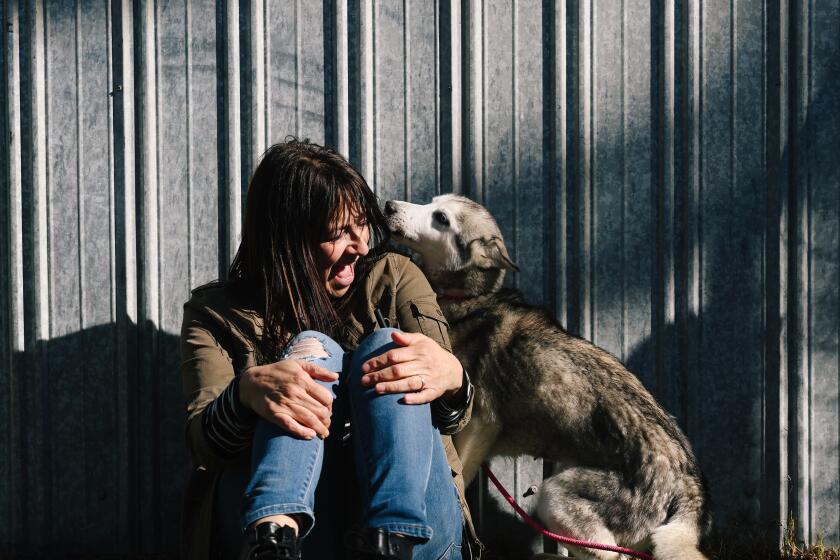Your dog can understand what you say better than you think, new study shows
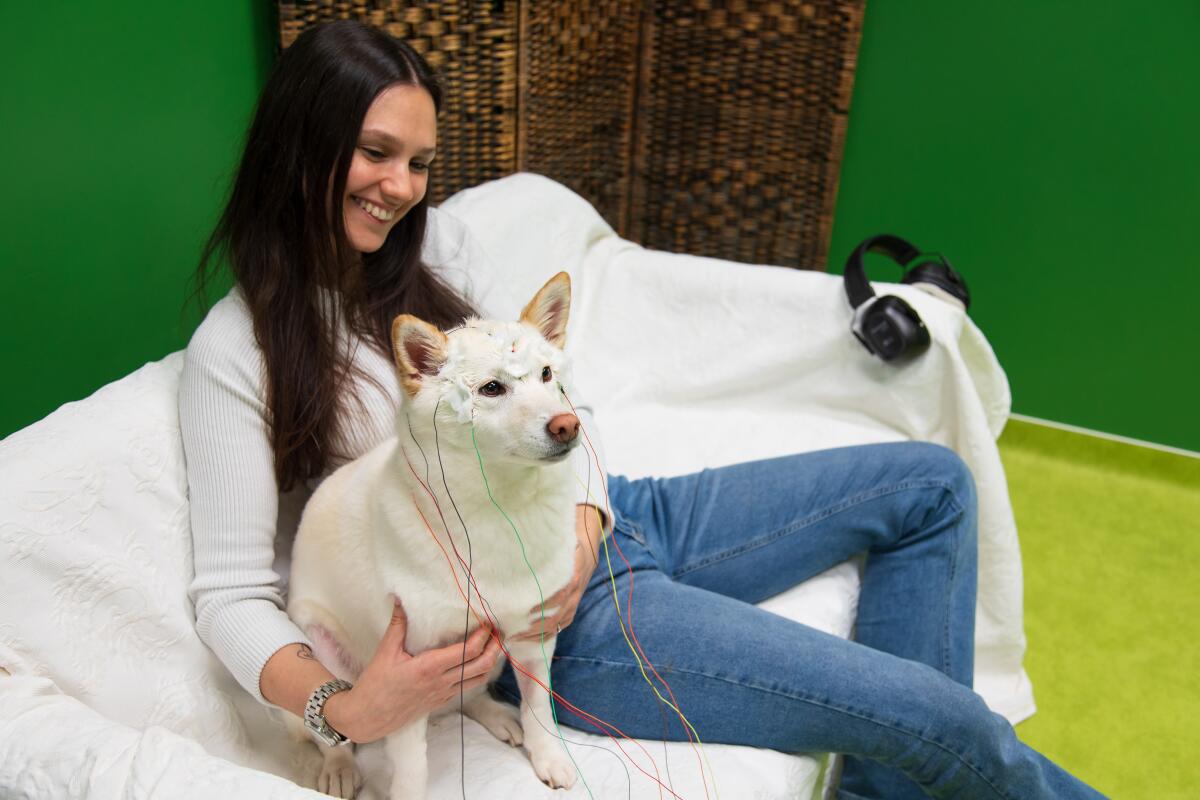
- Share via
Our dogs understand us better than they’ve been given credit for — and scientists say they have the brain wave evidence to prove it.
By placing electrodes on the heads of 18 pet dogs, researchers found striking evidence that the animals did not merely recognize the patterns of sound that come out of their owners’ mouths but also realized that certain words refer to specific objects.
The findings were reported Friday in the journal Current Biology.
“For decades there has been a debate about whether animals are capable of such a level of abstraction,” said study leader Marianna Boros, a neuroscientist and ethologist at Eotvos Lorand University in Budapest, Hungary. The experiments with dogs knock down the uniqueness of humans “a little bit.”
Rita Earl Blackwell leverages Instagram to develop a community of helpers, from celebrities to good Samaritans who go the extra mile to save dogs from overcrowded Los Angeles shelters that euthanize for space.
A few exceptional dogs have been trained to learn the names of hundreds of objects. Among the most esteemed was Chaser, a border collie from South Carolina who could remember the names of more than 1,000 toys.
Boros wondered whether more dogs understand that words have meanings but have no way to show it. Even when dogs succeed in behavioral studies, she said, “you never know exactly what happens in the brain.”
So she took inspiration from researchers who study language processing in humans and got an electroencephalogram machine. The EEG measures brain waves and can gauge the difference between the neural responses to a word that’s expected and a word that seems to come out of left field.
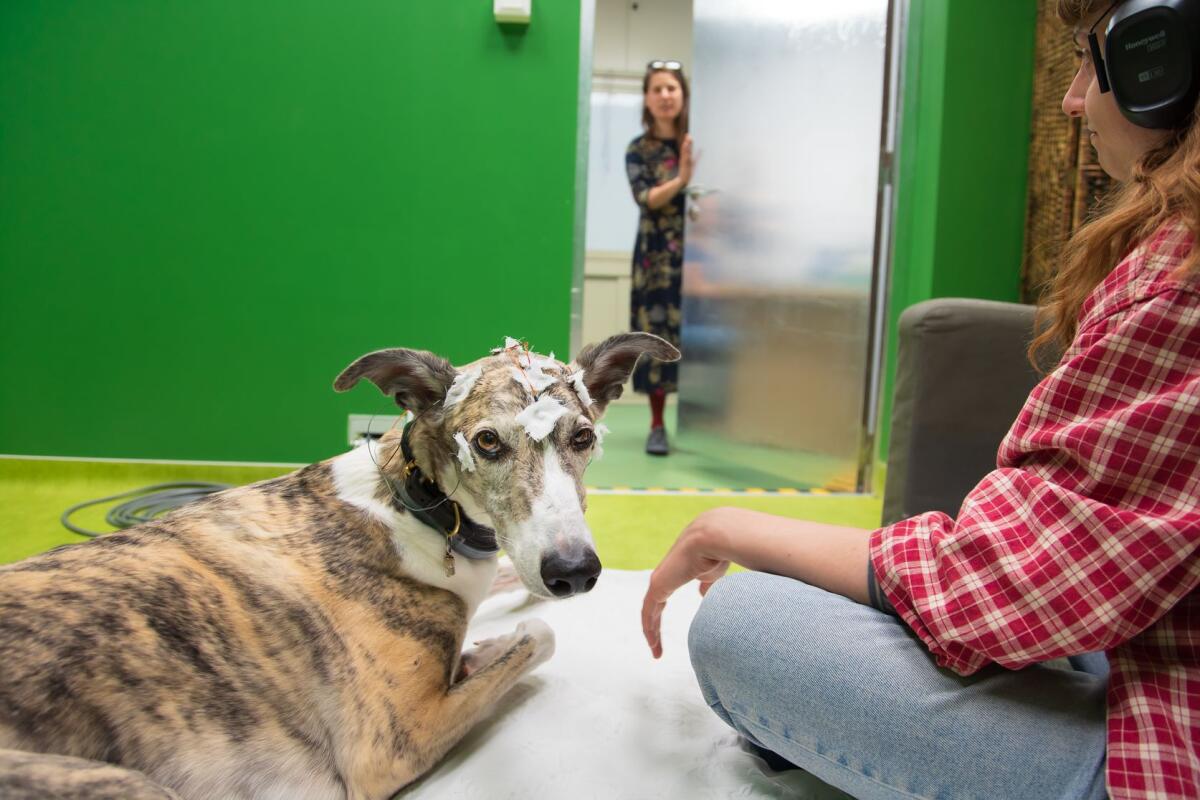
With a little cleanser, some conductive cream and gauze, the researchers connected the EEG electrodes to the heads of 27 dogs. Then the dogs listened to recordings of their owners using familiar words in simple sentences such as “Luna, here’s the ball.”
After a short pause, the owner appeared behind a window with an object in hand. Sometimes it was the object mentioned in the sentence; sometimes it wasn’t. Either way, the electrodes recorded small voltages from the dogs’ brains as they contemplated what they had heard and seen.
The tests went on for as long as a dog was willing to stay on its mat and participate, Boros said.
“The EEG studies with dogs are quite easy to run,” she said. “They don’t need to do anything. They just lay down.”
The 18 dogs that were able to sit through at least 10 trials were included in the analysis. With all but four of those animals, the EEGs revealed a distinct pattern: The wave signals dipped significantly lower when there was a match between the word and the object than when there wasn’t.
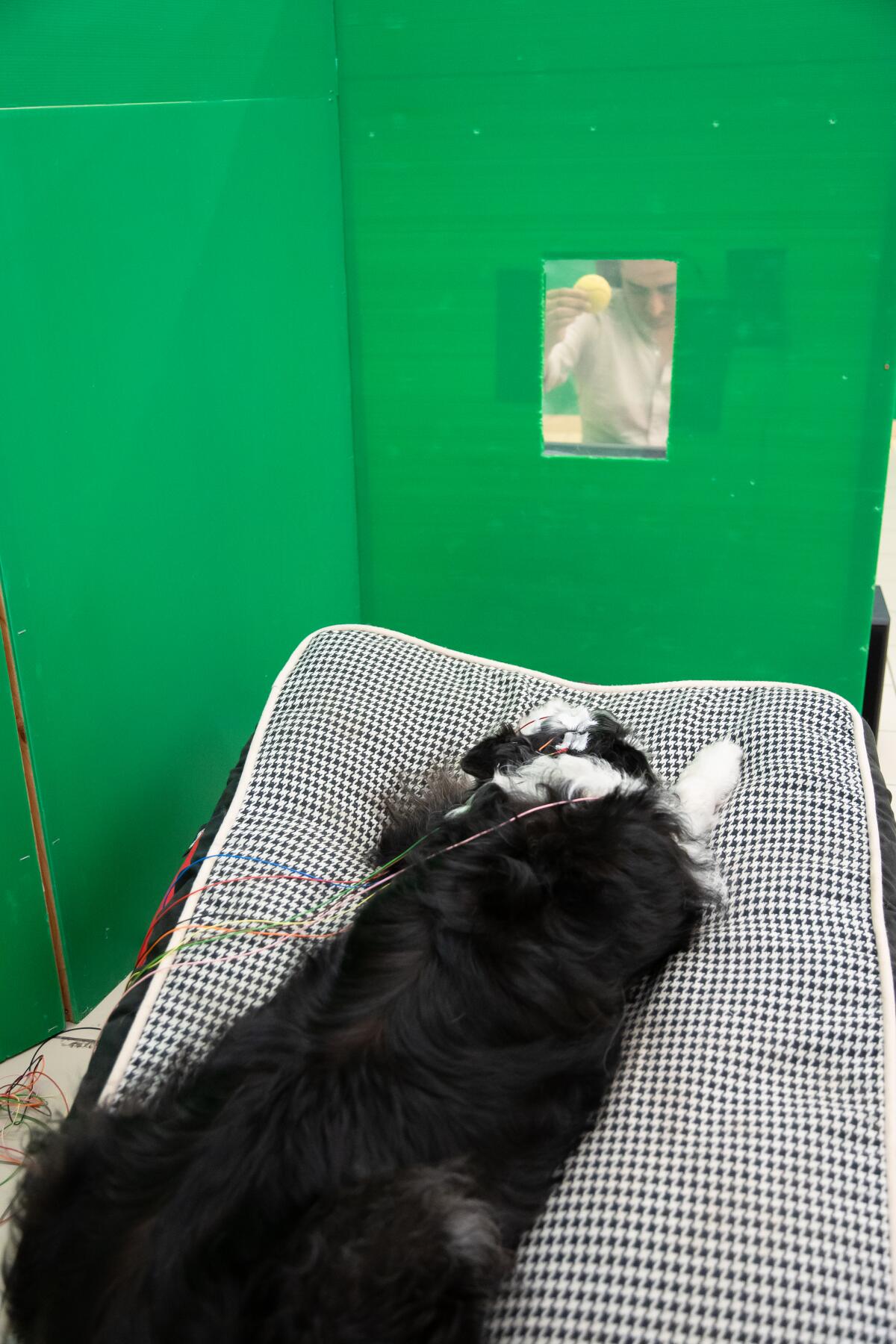
It was reminiscent of the difference seen in EEGs when humans are confronted with a word that seems out of place, such as a request to wash your hands with soap and coffee. Neuroscientists interpret this as a sign that the brain had been expecting another word — “water” instead of “coffee” — and had to do some extra work to understand the sentence.
Boros and her colleagues posit that the same thing happens in the brains of dogs: After hearing their owner use the word for an object, they called it up in their mind in anticipation of seeing it. Then, when an object appeared, it was either the thing they expected or something that threw them for a loop. The reason the dogs could tell something was amiss was that they understood the spoken word.
Everybody loves Tripod the three-legged coyote, but High Desert locals say that visitors are spoiling the beast with handouts and causing a dangerous situation.
The gap between hearing the word and seeing the object is key, said Lilla Magyari, a cognitive neuroscientist at the University of Stavanger in Norway, who worked on the study.
If a dog heard the word “ball” while looking at a ball in its owner’s hands, it might guess that the two go together because they are present at the same time, she said. But the experiment’s design prevented that from happening. Instead, the dog must have created an accurate mental representation of the spoken word.
The dog was thinking, “I heard the word, now the object needs to come,” Magyari said.
“Ball” was the most common vocabulary word among the dogs in the study. Several had words for “leash,” “phone” and “wallet.” Most had at least one name for a favorite toy, including one pet that understood four distinct words for different toys in the experiment.
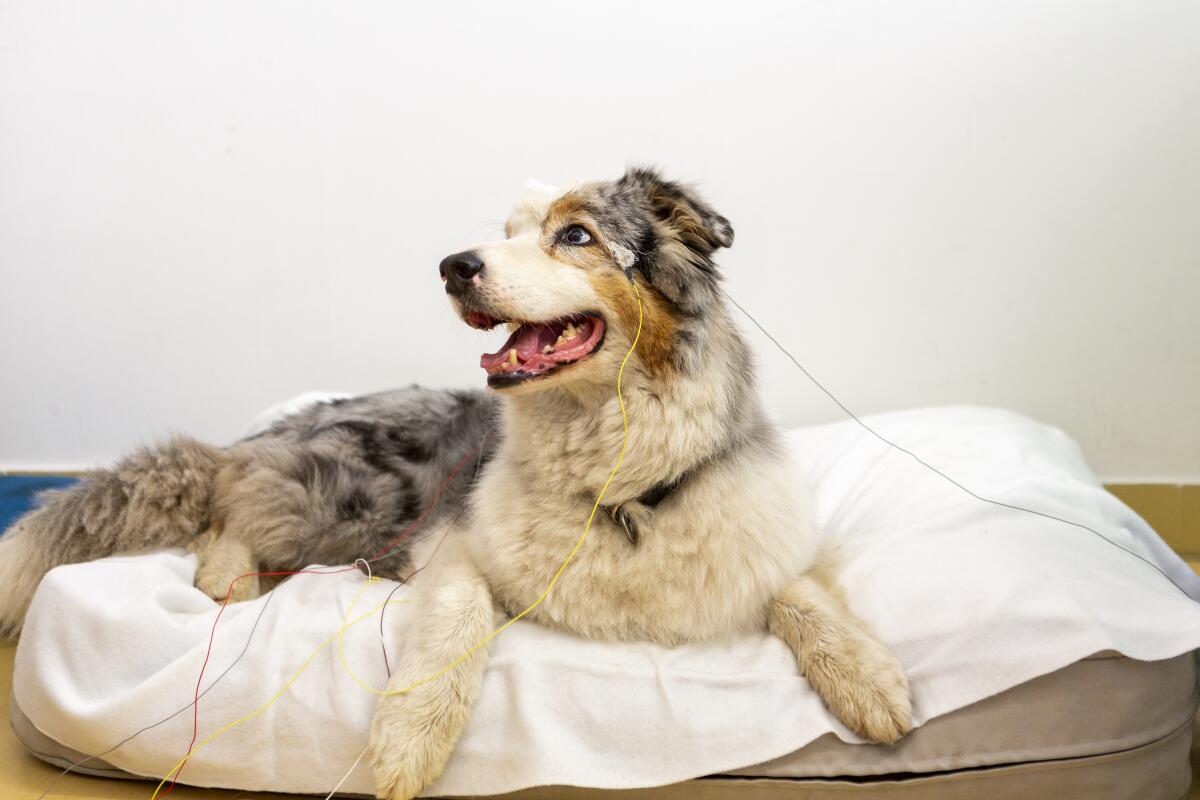
It’s not clear from the study results whether all dogs have the capacity to learn words. The ones that participated in the experiment were volunteered by their owners, who vouched that their pets knew at least five words for objects. (One dog was said to have a vocabulary of 230 nouns.)
Marie Nitzschner spent a decade studying the cognitive abilities and communication skills of dogs at the Max Planck Institute for Evolutionary Anthropology in Germany. She said she had ever met only one dog that seemed to know words for specific objects. Even so, she said the study makes a strong case that the phenomenon is real.
“It appears to me to be conclusive,” said Nitzschner, who was not involved in the work.
She added that dogs who lack this ability have nothing to worry about “because we still have good communication options. However, if I noticed that my dog had a talent in this direction, I would probably try to encourage this talent.”
It’s coyote pup season and coyote parents are on high alert, so should be hikers and their furry companions. Experts share what precautions outdoor enthusiasts should take.
Dog lovers are sure to be intrigued by the linguistic capabilities of their best friends. But the researchers see the study as a way to investigate why humans excel at language when other animals don’t.
“It’s kind of a mystery,” Magyari said. “We don’t know why all of a sudden humans were able to use such a complex system.”
By breaking it down into its component parts and studying whether any of them are shared with animals, “we can construct a theory about how language evolved in humans,” she said.
Of all species on Earth, dogs are singular study subjects because they live their entire lives immersed in a world rich with human speech. And unlike with cats, the ancestors of dogs were selected for domestication based on their ability to communicate with humans.
“It’s super-relevant for them,” Boros said.
